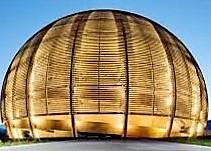Speaker
Description
The $^{25}$Al(p,γ)$^{26}$Si reaction is of tremendous interest in nuclear astrophysics. The production of the γ-ray emitter $^{26}$Al ground state can be bypassed in classical novae via the production of $^{26}$Si which decays to an isomeric state of $^{26}$Al. In order to more precisely estimate the amount of $^{26}$Al that is of classical novae origin, it’s crucial to determine the rate of the $^{25}$Al(p,γ)$^{26}$Si reaction at nova-burning temperatures. The production of $^{26}$Si is dominated by resonant captures to several excited states above the proton threshold in $^{26}$Si. There has been considerable experimental effort in recent years to observe and identify theses states [1], but the properties of the key resonances in $^{26}$Si remain unsettled.
The combination of GRETINA [2] coupled with the Fragment Mass Analyzer (FMA) [3] at Argonne National Laboratory (ANL), provided a powerful opportunity to identify transitions in $^{26}$Si, owing to the large acceptance of the separator and the Doppler-reconstruction capabilities and high-energy efficiency of the GRETINA array. The experiment, presented here, follows an earlier γ-ray spectroscopy study of the $^{26}$Si mirror nucleus, $^{26}$Mg, performed with Gammasphere at ANL where a l=1 resonance was identified for the first time (fig.1) [4]. In the same study, the lifetime of the 3+, 6125-keV state in $^{26}$Mg was measured via the Doppler shift attenuation method. The 3+, 414-keV resonance in $^{26}$Si dominates the $^{25}$Al(p,γ) reaction over most of the novae peak temperature range, while the introduction of the new 1- state increases the reaction rate by ~25% at the highest novae temperatures.
In this talk, new results on $^{26}$Si from the GRETINA+FMA study will be presented along with further information gained on the A=26 system. Information on both the level structure of $^{26}$Si and the impact on the astrophysical $^{25}$Al(p,γ)$^{26}$Si reaction will be discussed.
[1] K. Chipps, Phys. Rev. C 93, 035801 (2016).
[2] D. Weisshaar et al, Nucl. Instrum. Methods Phys. Res. A 847, 187 (2017).
[3] C.N. Davis et al., Nucl. Instrum. Methods Phys. Res. B 70, 358 (1992).
[4] L. Canete et al, Phys. Rev. C 104, L022802 (2021).
